Journal Description
Applied System Innovation
Applied System Innovation
(ASI) is an international, peer-reviewed, open access journal on integrated engineering and technology, published monthly online. It is the official journal of the International Institute of Knowledge Innovation and Invention (IIKII).
- Open Access— free for readers, with article processing charges (APC) paid by authors or their institutions.
- High Visibility: indexed within Scopus, ESCI (Web of Science), Inspec, Ei Compendex and other databases.
- Journal Rank: JCR - Q2 (Engineering, Electrical and Electronic) / CiteScore - Q1 (Applied Mathematics)
- Rapid Publication: manuscripts are peer-reviewed and a first decision is provided to authors approximately 27 days after submission; acceptance to publication is undertaken in 3.8 days (median values for papers published in this journal in the first half of 2025).
- Recognition of Reviewers: reviewers who provide timely, thorough peer-review reports receive vouchers entitling them to a discount on the APC of their next publication in any MDPI journal, in appreciation of the work done.
- Journal Cluster of Information Systems and Technology: Analytics, Applied System Innovation, Cryptography, Data, Digital, Informatics, Information, Journal of Cybersecurity and Privacy and Multimedia.
Impact Factor:
3.7 (2024);
5-Year Impact Factor:
4.0 (2024)
Latest Articles
Event-Triggered Fuzzy-Networked Control System for a 3-DOF Quadcopter with Limited-Bandwidth Communication
Appl. Syst. Innov. 2026, 9(1), 4; https://doi.org/10.3390/asi9010004 - 22 Dec 2025
Abstract
Quadcopters are attracting widespread attention due to their growing demand for use in various applications. Since wired communication would severely restrict a quadcopter’s range, maneuverability, and applications, quadcopters usually communicate via wireless networks. Although wireless communication allows the freedom of movement necessary for
[...] Read more.
Quadcopters are attracting widespread attention due to their growing demand for use in various applications. Since wired communication would severely restrict a quadcopter’s range, maneuverability, and applications, quadcopters usually communicate via wireless networks. Although wireless communication allows the freedom of movement necessary for a wide array of quadcopter applications, it is subject to bandwidth constraints. When multiple quadcopters operate simultaneously, the bandwidth of a wireless network will not meet the requirements. To address this issue, we propose an event-triggered fuzzy-networked control system for 3-DOF quadcopters that reduces the bandwidth requirement. We utilized a fuzzy-networked controller to control a 3-DOF quadcopter. After that, we adopted an event-triggered control approach to reduce the bandwidth requirement. Using the proposed method, one only needs to translate the signals while the event-triggering condition is satisfied, thus reducing the amount of data transmitted over the network. Also, to analyze the stability of the overall system, the Lyapunov stability theorem was adopted. Finally, the proposed method was validated through a 3-DOF quadcopter simulation model. The computer simulations are presented to demonstrate that the proposed control strategy enables a 75.2% (without external disturbance) reduction in bandwidth, which is sufficient to achieve the control objective. This reflects the fact that the proposed control scheme can achieve good control performance with relatively little bandwidth resources and indicates its potential to allow scalable deployment of UAVs.
Full article
(This article belongs to the Topic Application of IoT on Manufacturing, Communication and Engineering)
►
Show Figures
Open AccessArticle
A System-Level Approach to Pixel-Based Crop Segmentation from Ultra-High-Resolution UAV Imagery
by
Aisulu Ismailova, Moldir Yessenova, Gulden Murzabekova, Jamalbek Tussupov and Gulzira Abdikerimova
Appl. Syst. Innov. 2026, 9(1), 3; https://doi.org/10.3390/asi9010003 - 22 Dec 2025
Abstract
This paper proposed a two-level hybrid stacking model for the classification of crops—wheat, soybean, and barley—based on multispectral orthomosaics obtained from uncrewed aerial vehicles. The proposed method unites gradient boosting algorithms (LightGBM, XGBoost, CatBoost) and tree ensembles (RandomForest, ExtraTrees, Attention-MLP deep neural network),
[...] Read more.
This paper proposed a two-level hybrid stacking model for the classification of crops—wheat, soybean, and barley—based on multispectral orthomosaics obtained from uncrewed aerial vehicles. The proposed method unites gradient boosting algorithms (LightGBM, XGBoost, CatBoost) and tree ensembles (RandomForest, ExtraTrees, Attention-MLP deep neural network), whose predictions fuse at the meta-level using ExtraTreesClassifier. Spectral channels, along with a wide range of vegetation indices and their statistical characteristics, are used to construct the feature space. Experiments on an open dataset showed that the proposed model achieves high classification accuracy (Accuracy ≈ 95%, macro-F1 ≈ 0.95) and significantly outperforms individual algorithms across all key metrics. An analysis of the seasonal dynamics of vegetation indices confirmed the feasibility of monitoring phenological phases and early detection of stress factors. Furthermore, spatial segmentation of orthomosaics achieved approximately 99% accuracy in constructing crop maps, making the developed approach a promising tool for precision farming. The study’s results showed the high potential of hybrid ensembles for scaling to other crops and regions, as well as for integrating them into digital agricultural information systems.
Full article
(This article belongs to the Section Information Systems)
►▼
Show Figures

Figure 1
Open AccessArticle
Object-Centric Process Mining Framework for Industrial Safety and Quality Validation Using Support Vector Machines
by
Michael Maiko Matonya and István Budai
Appl. Syst. Innov. 2026, 9(1), 2; https://doi.org/10.3390/asi9010002 - 22 Dec 2025
Abstract
Ensuring reliable inspection and quality control in complex industrial settings remains a significant challenge, particularly when traditional manual methods are applied to dynamic, multi-object environments. This paper presents and validates a new hybrid framework that integrates Object-Centric Process Mining (OCPM) with Support Vector
[...] Read more.
Ensuring reliable inspection and quality control in complex industrial settings remains a significant challenge, particularly when traditional manual methods are applied to dynamic, multi-object environments. This paper presents and validates a new hybrid framework that integrates Object-Centric Process Mining (OCPM) with Support Vector Machines (SVMs) to improve industrial safety and quality assurance. The aims are: (1) to uncover and model the complex, multi-object processes characteristic of modern manufacturing using OCPM; (2) to assess these models in terms of conformance, performance, and the detection of bottlenecks; and (3) to design and embed a predictive layer based on Support Vector Regression (SVR) to anticipate process outcomes and support proactive control.The proposed methodology comprises a comprehensive pipeline: data fusion and OCEL structuring, OCPM for process discovery and conformance analysis, feature engineering, SVR for predictive modeling, and a multi-objective optimization layer. By applying this framework to a timber sawmill dataset, the study successfully modeled complex lumber drying operations, identified key object interactions, achieving a process conformance fitness score of 0.6905, and testing the integration of a predictive SVR layer. The SVR model’s predictive accuracy for production yield was found to be limited (
(This article belongs to the Section Industrial and Manufacturing Engineering)
►▼
Show Figures

Figure 1
Open AccessReview
Reviews of the Static, Adoptive, and Dynamic Sampling in Wafer Manufacturing
by
Hsuan-Yu Chen and Chiachung Chen
Appl. Syst. Innov. 2026, 9(1), 1; https://doi.org/10.3390/asi9010001 - 19 Dec 2025
Abstract
Semiconductor wafer manufacturing is one of the most complex and data-intensive processes in the industry, encompassing the front-end (FEOL), middle-end (MOL), and back-end (BEOL) stages, involving thousands of interdependent processes. Each stage can introduce potential variability, thereby reducing yield, making metrology and inspection
[...] Read more.
Semiconductor wafer manufacturing is one of the most complex and data-intensive processes in the industry, encompassing the front-end (FEOL), middle-end (MOL), and back-end (BEOL) stages, involving thousands of interdependent processes. Each stage can introduce potential variability, thereby reducing yield, making metrology and inspection crucial for process control. However, due to capacity, cost, and destructive testing constraints, exhaustive metrology for every wafer or die is impractical. Therefore, this study aims to introduce sampling strategies that have evolved to balance the accuracy, risk, and efficiency of measurement allocation. This review presents a literature review of static, adaptive, and dynamic sampling and discusses recent intelligent sampling techniques. The results show that traditional static sampling provides fixed, rule-based inspection schemes that ensure comparability and compliance but lack responsiveness to process variations. Adaptive sampling introduces flexibility, allowing measurement density to be adjusted based on detected drift, anomalies, or statistical control limits. Building on this, dynamic sampling represents a paradigm shift towards predictive, real-time decision-making driven by machine learning, risk analysis, and digital twin integration. The dynamic framework continuously assesses process uncertainties and prioritizes metrology to maximize information gain, thereby significantly reducing metrology workload without impacting yield or quality. Static, adaptive, and dynamic sampling together constitute a continuous evolution from deterministic control to self-optimizing intelligence. As semiconductor nodes move towards sub-3 nm, this intelligent sampling technology is crucial for maintaining yield, cost competitiveness, and process flexibility in autonomous, data-centric wafer fabs.
Full article
(This article belongs to the Section Industrial and Manufacturing Engineering)
Open AccessArticle
Optimization of Crowbar Resistance for Enhanced LVRT Capability in Wind Turbine Doubly Fed Induction Generator
by
Mahmoud M. Elkholy and M. Abdelateef Mostafa
Appl. Syst. Innov. 2025, 8(6), 191; https://doi.org/10.3390/asi8060191 - 16 Dec 2025
Abstract
►▼
Show Figures
Recently, the installed generation capacity of wind energy has expanded significantly, and the doubly fed induction generator (DFIG) has gained a prominent position amongst wind generators owing to its superior performance. It is extremely vital to enhance the low-voltage ride-through (LVRT) capability for
[...] Read more.
Recently, the installed generation capacity of wind energy has expanded significantly, and the doubly fed induction generator (DFIG) has gained a prominent position amongst wind generators owing to its superior performance. It is extremely vital to enhance the low-voltage ride-through (LVRT) capability for the wind turbine DFIG system because the DFIG is very sensitive to faults in the electrical grid. The major concept of LVRT is to keep the DFIG connected to the electrical grid in the case of an occurrence of grid voltage sags. The currents of rotor and DC-bus voltage rise during voltage dips, resulting in damage to the power electronic converters and the windings of the rotor. There are many protection approaches that deal with LVRT capability for the wind turbine DFIG system. A popular approach for DFIG protection is the crowbar technique. The resistance of the crowbar must be precisely chosen owing to its impact on both the currents of the rotor and DC-bus voltage, while also ensuring that the rotor speed does not exceed its maximum limit. Therefore, this paper aims to obtain the optimal values of crowbar resistance to minimize the crowbar energy losses and ensure stable DFIG operation during grid voltage dips. A recent optimization technique, the Starfish Optimization (SFO) algorithm, was used for cropping the optimal crowbar resistance for improving LVRT capability. To validate the accuracy of the results, the SFO results were compared to the well-known optimization algorithm, particle swarm optimizer (PSO). The performance of the wind turbine DFIG system was investigated by using Matlab/Simulink at a rated wind speed of 13 m/s. The results demonstrated that the increases in DC-link voltage and rotor speed were reduced by 42.5% and 45.8%, respectively.
Full article
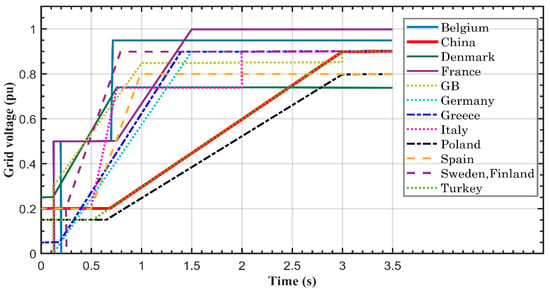
Figure 1
Open AccessArticle
Decision Support System for Wind Farm Maintenance Using Robotic Agents
by
Vladimir Kureichik, Vladislav Danilchenko, Philip Bulyga and Oleg Kartashov
Appl. Syst. Innov. 2025, 8(6), 190; https://doi.org/10.3390/asi8060190 - 3 Dec 2025
Abstract
►▼
Show Figures
The automation of wind turbine maintenance processes is aimed at improving the operational efficiency of wind farms through timely diagnosis of technical condition, predictive identification of potential failures, and optimization of the distribution of repair and restoration procedures. In this context, the main
[...] Read more.
The automation of wind turbine maintenance processes is aimed at improving the operational efficiency of wind farms through timely diagnosis of technical condition, predictive identification of potential failures, and optimization of the distribution of repair and restoration procedures. In this context, the main objective of the study is to improve the reliability and efficiency of wind energy infrastructure by developing an intelligent decision support system for wind turbine maintenance. The proposed architecture includes a module for optimizing the routes of robotic agents, which implements a hybrid method based on a combination of the A* algorithm and a modified ant algorithm with dynamic pheromone updating and B-spline trajectory smoothing, as well as a module for detecting based on a modified YOLOv3 model with integrated adaptive feature fusion and bio-inspired anchor frame optimization. The choice of the YOLOv3 architecture is due to the optimal balance between accuracy and inference speed on embedded platforms of robotic autonomous agents, which ensures the functioning of the detection module in real time with limited computing resources. The results of the computational experiment confirmed a 15–20% reduction in route length and energy consumption, as well as a 41% increase in the
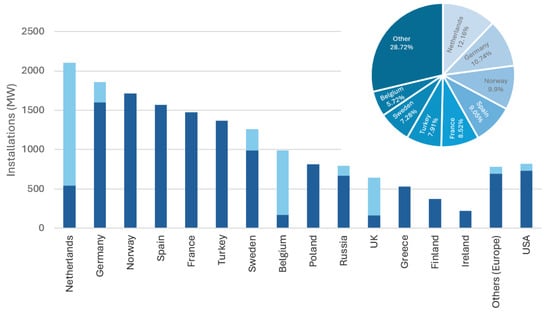
Figure 1
Open AccessArticle
Measuring Students’ Satisfaction on an XAI-Based Mixed Initiative Tutoring System for Database Design
by
S. M. F. D. Syed Mustapha
Appl. Syst. Innov. 2025, 8(6), 189; https://doi.org/10.3390/asi8060189 - 2 Dec 2025
Abstract
This research proposes the development of an Entity-Relationship Diagram—PRO (ERD-PRO) to assist students in understanding the concept of developing Entity-Relationship Diagrams in designing a database. ERD-PRO is an Intelligent Tutoring System (ITS) that is built using a mixed-initiative approach to address the learning
[...] Read more.
This research proposes the development of an Entity-Relationship Diagram—PRO (ERD-PRO) to assist students in understanding the concept of developing Entity-Relationship Diagrams in designing a database. ERD-PRO is an Intelligent Tutoring System (ITS) that is built using a mixed-initiative approach to address the learning challenges by adopting Explainable Artificial Intelligence (XAI) concept to provide individualized and on-demand feedback and guidance. The effectiveness of ERD-PRO is tested on 25 participants from different educational institutions. Pre- development surveys are conducted to determine learning needs and post-development surveys are performed to measure the success. The results show that the design of ERD-PRO, guided by survey findings, successfully addresses key challenges in database design education. 65% of students agreed that the system’s explanation facilities effectively clarified difficult topics, and 90% expressed high satisfaction with the tool. The integration of XAI features within ERD-PRO has enhanced its ability to provide meaningful, scenario-based explanations, demonstrating its potential as an effective intelligent tutoring system. These findings validate the effectiveness of ERD-PRO in meeting its objectives and highlight its value in providing tailored explanations for database design instruction.
Full article
(This article belongs to the Special Issue Feature Papers in the ‘Applied Systems on Educational Innovations and Emerging Technologies’ Section)
►▼
Show Figures

Figure 1
Open AccessArticle
Fuzzy Fusion of Monocular ORB-SLAM2 and Tachometer Sensor for Car Odometry
by
David Lázaro Mata, José Alfredo Padilla Medina, Juan José Martínez Nolasco, Juan Prado Olivarez and Alejandro Israel Barranco Gutiérrez
Appl. Syst. Innov. 2025, 8(6), 188; https://doi.org/10.3390/asi8060188 - 30 Nov 2025
Abstract
Estimating the absolute scale of reconstructed camera trajectories in monocular odometry is a challenging task due to the inherent scale ambiguity in any monocular vision system. One promising solution is to fuse data from different sensors, which can improve the accuracy and precision
[...] Read more.
Estimating the absolute scale of reconstructed camera trajectories in monocular odometry is a challenging task due to the inherent scale ambiguity in any monocular vision system. One promising solution is to fuse data from different sensors, which can improve the accuracy and precision of scale estimation. However, this approach often requires additional effort in sensor design and data processing. In this paper, we propose a novel method for fusing single-camera data with wheel odometer readings using a fuzzy system. The architecture of the fuzzy system has as inputs the wheel odometer value and the translation and rotation obtained from ORB-SLAM2. It was trained with the ANFIS tool in MATLAB 2014b. Our approach yields significantly better results compared to state-of-the-art pure monocular systems. In our experiments, the average error relative to GPS measurements was only four percent. A key advantage of this method is the elimination of the sensor calibration step, allowing for straightforward data fusion without a substantial increase in data processing demands.
Full article
(This article belongs to the Special Issue Autonomous Robotics and Hybrid Intelligent Systems)
►▼
Show Figures

Figure 1
Open AccessArticle
Unveiling the Scientific Knowledge Evolution: Carbon Capture (2007–2025)
by
Kuei-Kuei Lai, Yu-Jin Hsu and Chih-Wen Hsiao
Appl. Syst. Innov. 2025, 8(6), 187; https://doi.org/10.3390/asi8060187 - 30 Nov 2025
Abstract
This study explores how research on carbon capture technologies (CCTs) has developed over time and shows how semantic text mining can improve the analysis of technology trajectories. Although CCTs are widely viewed as essential for net-zero transitions, the literature is still scattered across
[...] Read more.
This study explores how research on carbon capture technologies (CCTs) has developed over time and shows how semantic text mining can improve the analysis of technology trajectories. Although CCTs are widely viewed as essential for net-zero transitions, the literature is still scattered across many subthemes, and links between engineering advances, infrastructure deployment, and policy design are often weak. Methods that rely mainly on citations or keyword frequencies tend to overlook contextual meaning and the subtle diffusion of ideas across these strands, making it difficult to reconstruct clear developmental pathways. To address this problem, we ask the following: How do CCT topics change over time? What evolutionary mechanisms drive these transitions? And which themes act as bridges between technical lineages? We first build a curated corpus using a PRISMA-based screening process. We then apply BERTopic, integrating Sentence-BERT embeddings with UMAP, HDBSCAN, and class-based TF-IDF, to identify and label coherent semantic topics. Topic evolution is modeled through a PCC-weighted, top-K filtered network, where cross-year connections are categorized as inheritance, convergence, differentiation, or extinction. These patterns are further interpreted with a Fish-Scale Multiscience mapping to clarify underlying theoretical and disciplinary lineages. Our results point to a two-stage trajectory: an early formation phase followed by a period of rapid expansion. Long-standing research lines persist in amine absorption, membrane separation, and metal–organic frameworks (MOFs), while direct air capture emerges later and becomes increasingly stable. Across the full period, five evolutionary mechanisms operate in parallel. We also find that techno-economic assessment, life-cycle and carbon accounting, and regulation–infrastructure coordination serve as key “weak-tie” bridges that connect otherwise separated subfields. Overall, the study reconstructs the core–periphery structure and maturity of CCT research and demonstrates that combining semantic topic modeling with theory-aware mapping complements strong-tie bibliometric approaches and offers a clearer, more transferable framework for understanding technology evolution.
Full article
(This article belongs to the Topic Biomedical Engineering, Healthcare and Sustainability, 2nd Edition)
►▼
Show Figures

Figure 1
Open AccessArticle
Zero-Shot to Head-Shot: Hyperpersonalization in the Age of Generative AI
by
Kanishka Dandeniya, Sam Saltis, Shalinka Jayatilleke, Nishan Mills, Harsha Moraliyage, Daswin De Silva and Milos Manic
Appl. Syst. Innov. 2025, 8(6), 186; https://doi.org/10.3390/asi8060186 - 30 Nov 2025
Abstract
►▼
Show Figures
Generative Artificial Intelligence (GenAI) is rapidly transforming industries and organizations through automation and augmentation. Personalization of human–system interaction is a key area that can be significantly advanced through the effective implementation of GenAI. GenAI, positioned as an intermediary between humans and systems, can
[...] Read more.
Generative Artificial Intelligence (GenAI) is rapidly transforming industries and organizations through automation and augmentation. Personalization of human–system interaction is a key area that can be significantly advanced through the effective implementation of GenAI. GenAI, positioned as an intermediary between humans and systems, can transform the human experience from the pre-defined, conventional notions of personalization into a dynamic and integrated hyperpersonalization capability. This article presents the zero-shot-to-head-shot hyperpersonalization (Z2H2) framework, which aims to achieve this through the effective adoption of GenAI techniques. It is a domain-neutral framework of three incremental stages named zero-shot, few-shot, and head-shot that gradually increase the level of hyperpersonalization of the human–system interaction. The framework is further represented in a layered system design and the Z2H2 Data Modality Matrix (ZDMM), which systematically maps data types, AI capabilities, and personalization objectives for each stage. The capabilities of the framework are demonstrated in an educational setting, followed by an empirical evaluation using the Open University Learning Analytics Dataset (OULAD). Although this dataset only contains demographic and aggregated clickstream data, which is a subset of attributes relevant to the entire framework, the gradual development of zero-shot-to-head-shot hyperpersonalization is effectively demonstrated and validated on these student interactions.
Full article

Figure 1
Open AccessArticle
Enhancing the Effectiveness of Juvenile Protection: Deep Learning-Based Facial Age Estimation via JPSD Dataset Construction and YOLO-ResNet50
by
Yuqiang Wu, Qingyang Gao, Yichen Lin, Zhanhai Yang and Xinmeng Wang
Appl. Syst. Innov. 2025, 8(6), 185; https://doi.org/10.3390/asi8060185 - 29 Nov 2025
Abstract
An increasing number of juveniles are accessing adult-oriented venues, such as bars and nightclubs, where supervision is frequently inadequate, thereby elevating their risk of both offline harm and unmonitored exposure to harmful online content. Existing facial age estimation systems, which are primarily designed
[...] Read more.
An increasing number of juveniles are accessing adult-oriented venues, such as bars and nightclubs, where supervision is frequently inadequate, thereby elevating their risk of both offline harm and unmonitored exposure to harmful online content. Existing facial age estimation systems, which are primarily designed for adults, have significant limitations when it comes to protecting juveniles, hindering the efficiency of supervising them in key venues. To address these challenges, this study proposes a facial age estimation solution for juvenile protection. First, we have designed a ‘detection–cropping–classification’ framework comprising three stages. This first detects facial regions using a detection algorithm, then crops the image before inputting the results into a classification model for age estimation. Secondly, we constructed the the Juvenile Protection Surveillance and Detection (JPSD) Dataset by integrating five public datasets: UTKface, AgeDB, APPA-REAL, MegaAge and FG-NET. This dataset contains 14,260 images categorised into four age groups: 0–8 years, 8–14 years, 14–18 years and over 18 years. Thirdly, we conducted baseline model comparisons. In the object detection phase, three YOLO algorithms were selected for face recognition. In the age estimation phase, traditional convolutional neural networks (CNNs), such as ResNet50 and VGG16, were contrasted with vision transformer (ViT)-based models, such as ViT and BiFormer. Gradient-weighted Class Activation Mapping (Grad-CAM) was used for visual analysis to highlight differences in the models’ decision-making processes. Experiments revealed that YOLOv11 is the optimal detector for accurate facial localisation, and that ResNet50 is the best base classifier for enhancing age-sensitive feature extraction, outperforming BiFormer. The results show that the framework achieves Recall of 89.17% for the 0–8 age group and 95.17% for the over-18 age group. However, we have found that the current model has low Recall rates for the 8–14 and 14–18 age groups. Therefore, in the near term, we emphasise that this technology should only be used as a decision-support tool under strict human-in-the-loop supervision. This study provides an essential dataset and technical framework for juvenile facial age estimation, offering support for juvenile online protection, smart policing and venue supervision.
Full article
(This article belongs to the Section Artificial Intelligence)
►▼
Show Figures

Figure 1
Open AccessArticle
Design and Evaluation of a Laser Triangulation System for Pencil Lead Defect Inspection
by
Natheer Almtireen, Khalid Kurik, Mutaz Ryalat and Dominik Schubert
Appl. Syst. Innov. 2025, 8(6), 184; https://doi.org/10.3390/asi8060184 - 29 Nov 2025
Abstract
►▼
Show Figures
High volume pencil manufacturing often generates substantial material waste due to a small proportion of products having missing or recessed graphite leads. Standard vision-based quality control processes discard entire wooden slats that carry any faulty pencils, causing excessive waste of usable wood and
[...] Read more.
High volume pencil manufacturing often generates substantial material waste due to a small proportion of products having missing or recessed graphite leads. Standard vision-based quality control processes discard entire wooden slats that carry any faulty pencils, causing excessive waste of usable wood and graphite resources. This study describes the design and implementation of a laser triangulation-based inspection system for lead defect detection after individual pencils are cut from the slat. The system combines a two-dimensional laser profile scanner with synchronized triggering sensors and a programmable logic controller (PLC)-controlled pneumatic rejection unit. Using the systematic design methodology for VDI 2221, a functional prototype was developed, which was then tested in a simulated production system with a throughput of up to 200 pencils per minute. The proposed system was able to detect missing and recessed leads highly accurately and correctly classified 98–100% of pencils without false rejections of acceptable products. The most common type of defect was missing or deeply recessed lead with an accuracy of 98.5%, and the less common partial-lead fractures had a lower percentage of detection of nearly 92% due to geometric sensitivity. The developed inline inspection system was successful in identifying and rejecting defective pencils without the waste of materials and provided a viable alternative of economical implementation with less than a one-year payback period. Through its increased resource efficiency and decreased raw material waste, the proposed system contributes to the United Nations Sustainable Development Goals, namely SDG 9 (Industry, Innovation, and Infrastructure) and SDG 12 (Responsible Consumption and Production).
Full article
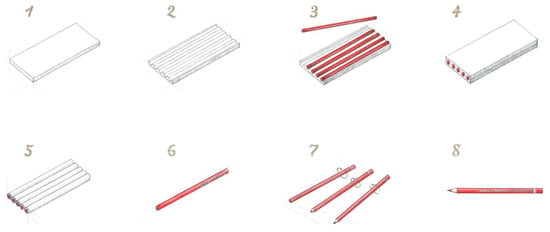
Figure 1
Open AccessReview
Review of Applications of Experimental Designs in Wafer Manufacturing
by
Hsuan-Yu Chen and Chiachung Chen
Appl. Syst. Innov. 2025, 8(6), 183; https://doi.org/10.3390/asi8060183 - 28 Nov 2025
Abstract
Semiconductor wafer fabrication is one of the most complex and demanding processes in industry. The process involves numerous sequential steps, including photolithography, deposition, etching, and chemical–mechanical polishing (CMP). At advanced process nodes below 5 nanometers, even angstrom-level deviations in parameters such as oxide
[...] Read more.
Semiconductor wafer fabrication is one of the most complex and demanding processes in industry. The process involves numerous sequential steps, including photolithography, deposition, etching, and chemical–mechanical polishing (CMP). At advanced process nodes below 5 nanometers, even angstrom-level deviations in parameters such as oxide thickness or critical dimension (CD) can lead to yield degradation or device failure. Traditional single-factor experimental methods are insufficient to capture the inherent multivariate interactions within plasma, thermal, and chemical processes. This review introduces the application of Design of Experiments (DOE) in wafer fabrication and demonstrates that it provides a statistically rigorous framework for addressing these challenges. It enables the simultaneous analysis of multiple variables, quantifying main effects and interactions, and developing predictive models with fewer runs. DOE can accelerate process development, reduce wafer consumption, enhance process robustness, and support applications in processes such as photolithography, CMP, and deposition. Beyond process optimization, DOE, combined with virtual metrology, machine learning, and digital twin technologies, provides a balanced dataset for predictive analytics and real-time control. Its functions encompass proactive monitoring, adaptive formulation optimization, and eco-efficient manufacturing aligned with sustainability goals. As wafer fabs adopt AI-assisted, simulation-driven environments, experimental design remains the foundation for knowledge-intensive, data-driven decision-making. This ensures continuous improvement in yield, manufacturability, and competitiveness in future semiconductor miniaturization processes.
Full article
(This article belongs to the Section Industrial and Manufacturing Engineering)
Open AccessArticle
Advancing Distribution System Planning: Exact MINLP Methods for Optimal PV and Reactive Device Deployment
by
Brandon Cortés-Caicedo, Oscar Danilo Montoya, Luis Fernando Grisales-Noreña, Santiago Bustamante-Mesa and Walter Gil-González
Appl. Syst. Innov. 2025, 8(6), 182; https://doi.org/10.3390/asi8060182 - 28 Nov 2025
Abstract
►▼
Show Figures
The planning of unbalanced three-phase distribution networks increasingly requires the coordinated integration of distributed energy resources, such as photovoltaic (PV) generators and static compensators (D-STATCOMs), to enhance system performance and reduce costs. This planning task is inherently challenging, as it leads to a
[...] Read more.
The planning of unbalanced three-phase distribution networks increasingly requires the coordinated integration of distributed energy resources, such as photovoltaic (PV) generators and static compensators (D-STATCOMs), to enhance system performance and reduce costs. This planning task is inherently challenging, as it leads to a mixed-integer nonlinear optimization problem driven by nonconvex voltage–current–power relationships, phase unbalances, and the temporal variability of demand and solar irradiance. This work proposes an exact Mixed-Integer Nonlinear Programming (MINLP) framework for the joint siting and sizing of PV units and D-STATCOM devices, with an objective function based on the minimization of the equivalent annual cost of energy purchases and investments. The methodology is applied to 25- and 37-bus unbalanced test systems and benchmarked against four state-of-the-art metaheuristic algorithms. The results show that the exact MINLP consistently attains the global optimum, yielding reductions in equivalent annual cost of USD 392,855 (14.36%) and USD 436,361 (14.90%) for the respective test systems, whereas the metaheuristics provide near-optimal but slightly dispersed solutions. These findings highlight the potential of exact optimization as a robust and economically sound tool for long-term distribution network planning, combining technical reliability with guaranteed global optimality.
Full article
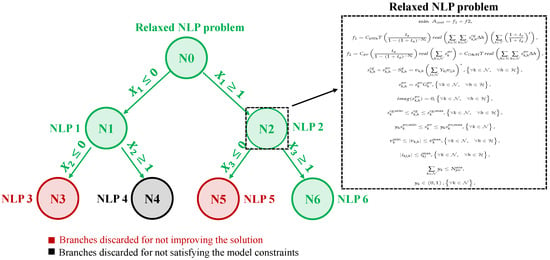
Figure 1
Open AccessArticle
Vision–Geometry Fusion for Measuring Pupillary Height and Interpupillary Distance via RC-BlendMask and Ensemble Regression Trees
by
Shishuo Han, Zihan Yang and Huiyu Xiang
Appl. Syst. Innov. 2025, 8(6), 181; https://doi.org/10.3390/asi8060181 - 27 Nov 2025
Abstract
►▼
Show Figures
This study proposes an automated, visual–geometric fusion method for measuring pupillary height (PH) and interpupillary distance (PD), aiming to replace manual measurements while balancing accuracy, efficiency, and cost accessibility. To this end, a two-layer Ensemble of Regression Tree (ERT) is used to coarsely
[...] Read more.
This study proposes an automated, visual–geometric fusion method for measuring pupillary height (PH) and interpupillary distance (PD), aiming to replace manual measurements while balancing accuracy, efficiency, and cost accessibility. To this end, a two-layer Ensemble of Regression Tree (ERT) is used to coarsely localize facial landmarks and the pupil center, which is then refined via direction-aware ray casting and edge-side-stratified RANSAC followed by least-squares fitting; in parallel, an RC-BlendMask instance-segmentation module extracts the lowest rim point of the spectacle lens. Head pose and lens-plane depth are estimated with the Perspective-n-Point (PnP) algorithm to enable pixel-to-millimeter calibration and pose gating, thereby achieving 3D quantification of PH/PD under a single-camera setup. In a comparative study with 30 participants against the Zeiss i.Terminal2, the proposed method achieved mean absolute errors of 1.13 mm (PD), 0.73 mm (PH-L), and 0.89 mm (PH-R); Pearson correlation coefficients were r = 0.944 (PD), 0.964 (PH-L), and 0.916 (PH-R), and Bland–Altman 95% limits of agreement were −2.00 to 2.70 mm (PD), −0.84 to 1.76 mm (PH-L), and −1.85 to 1.79 mm (PH-R). Lens segmentation performance reached a Precision of 97.5% and a Recall of 93.8%, supporting robust PH extraction. Overall, the proposed approach delivers measurement agreement comparable to high-end commercial devices on low-cost hardware, satisfies ANSI Z80.1/ISO 21987 clinical tolerances for decentration and prism error, and is suitable for both in-store dispensing and tele-dispensing scenarios.
Full article
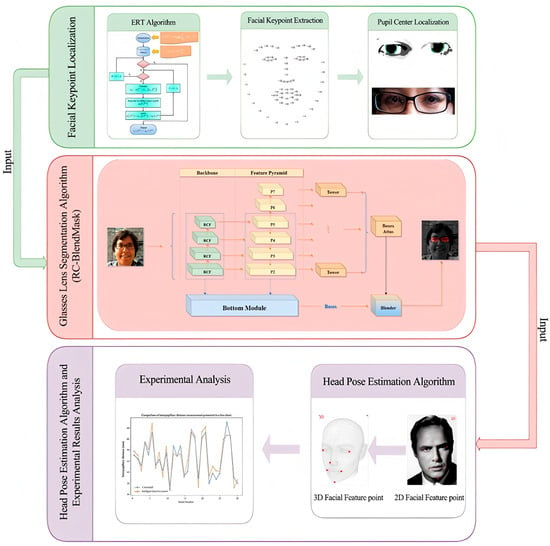
Figure 1
Open AccessArticle
Operational Cost Minimization in AC Microgrids via Active and Reactive Power Control of BESS: A Case Study from Colombia
by
Daniel Sanin-Villa, Luis Fernando Grisales-Noreña and Oscar Danilo Montoya
Appl. Syst. Innov. 2025, 8(6), 180; https://doi.org/10.3390/asi8060180 - 26 Nov 2025
Abstract
►▼
Show Figures
This work proposes an intelligent strategy for the coordinated management of active and reactive power in Battery Energy Storage Systems (BESSs) within AC microgrids operating under both grid-connected (GCM) and islanded (IM) modes to minimize daily operational costs. The problem is formulated as
[...] Read more.
This work proposes an intelligent strategy for the coordinated management of active and reactive power in Battery Energy Storage Systems (BESSs) within AC microgrids operating under both grid-connected (GCM) and islanded (IM) modes to minimize daily operational costs. The problem is formulated as a mixed-variable optimization model that explicitly leverages the control capabilities of BESS power converters. To solve it, a Parallel Particle Swarm Optimization (PPSO) algorithm is employed, coupled with a Successive Approximation (SA) power flow solver. The proposed approach was benchmarked against parallel implementations of the Crow Search Algorithm (PCSA) and the JAYA algorithm (PJAYA), both in parallel, using a realistic 33-node AC microgrid test system based on real demand and photovoltaic generation profiles from Medellín, Colombia. The strategy was evaluated under both deterministic conditions (average daily profiles) and stochastic scenarios (100 daily profiles with uncertainty). The proposed framework is evaluated on a 33-bus AC microgrid that operates in both grid-connected and islanded modes, with a battery energy storage system dispatched at both active and reactive power levels subject to network, state-of-charge, and power-rating constraints. Three population-based optimization algorithms are used to coordinate BESS schedules, and their performance is compared based on daily operating cost, BESS cycling, and voltage profile quality. Quantitatively, the PPSO strategy achieved cost reductions of 2.39% in GCM and 1.62% in IM under deterministic conditions, with a standard deviation of only 0.0200% in GCM and 0.2962% in IM. In stochastic scenarios with 100 uncertainty profiles, PPSO maintained its robustness, reaching average reductions of 2.77% in GCM and 1.53% in IM. PPSO exhibited consistent robustness and efficient performance, reaching the highest average cost reductions with low variability and short execution times in both operating modes. These findings indicate that the method is well-suited for real-time implementation and contributes to improving economic outcomes and operational reliability in grid-connected and islanded microgrid configurations. The case study results show that the different strategies yield distinct trade-offs between economic performance and computational effort, while all solutions satisfy the technical limits of the microgrid.
Full article

Figure 1
Open AccessArticle
DRF-YOLO Model for Small UAV Detection Through Multi-Scale Residual Enhancement and Progressive Feature Fusion
by
Songwei Wang, Jianping Shuai, Yuzhu Yang, Xiaoxiao Hu, Chenxi Yang and Ya Zhou
Appl. Syst. Innov. 2025, 8(6), 179; https://doi.org/10.3390/asi8060179 - 26 Nov 2025
Abstract
Detecting small-scale objects remains a critical challenge with limited pixel information, complex backgrounds, and varying imaging conditions. To tackle these challenges, we propose an innovative high-precision detection framework (DRF-YOLO) that integrates a dilated-wise residual (DWR) module and an asymptotic feature pyramid network (AFPN).
[...] Read more.
Detecting small-scale objects remains a critical challenge with limited pixel information, complex backgrounds, and varying imaging conditions. To tackle these challenges, we propose an innovative high-precision detection framework (DRF-YOLO) that integrates a dilated-wise residual (DWR) module and an asymptotic feature pyramid network (AFPN). The DWR module enhances contextual representation and enriches spatial detail, while AFPN optimizes multi-scale feature fusion and semantic alignment. Extensive evaluations were carried out on the DUT-Anti-UAV and Det-Fly datasets, which contain images taken in complex aerial environments. The DRF-YOLO model achieved an mAP@50 of 86.9 and 91.1% on the two respective datasets, showing performance gains of 1.5% and 3.3% compared to the YOLOv8 reference model, and yielded mAP@50:95 gains of 1.1 and 2.3%, respectively. The synergistic effect of the DWR module and AFPN architecture enables significant enhancement in mAP@50, mAP@50:95, precision, and recall, demonstrating an optimal balance between accuracy and object coverage. The model also demonstrates improved robustness under complex backgrounds and occlusion, underscoring its potential for accurate UAV detection.
Full article
(This article belongs to the Section Artificial Intelligence)
►▼
Show Figures
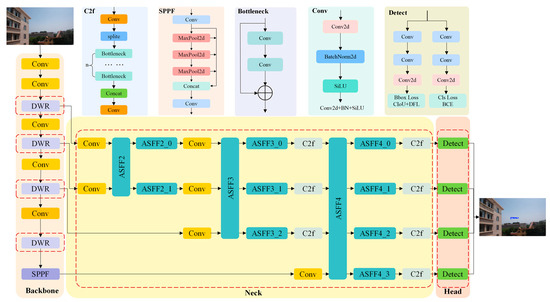
Figure 1
Open AccessArticle
Control Technology of Master-Master Working Mode for Advanced Aircraft Dual-Redundancy Electro-Hydrostatic Flight Control Actuation System
by
Xin Bao, Yan Li, Zhong Wang and Rui Wang
Appl. Syst. Innov. 2025, 8(6), 178; https://doi.org/10.3390/asi8060178 - 25 Nov 2025
Abstract
►▼
Show Figures
In response to the demands for high reliability, excellent dynamic response, and high-precision control of advanced aircraft actuation systems, this study focuses on the control technology for the master-master operating mode of dual-redundancy electro-hydrostatic actuation (EHA) systems. A multi-domain coupling model integrating motor
[...] Read more.
In response to the demands for high reliability, excellent dynamic response, and high-precision control of advanced aircraft actuation systems, this study focuses on the control technology for the master-master operating mode of dual-redundancy electro-hydrostatic actuation (EHA) systems. A multi-domain coupling model integrating motor magnetic circuit saturation, hydraulic viscosity-temperature characteristics, and mechanical clearances was established, based on which a current-loop decoupling technique using vector control was developed. Furthermore, the study combined adaptive sliding mode control (ASMC) and an improved active disturbance rejection control (ADRC) to enhance the robustness of the speed loop and the disturbance rejection capability of the position loop, respectively. To address the key challenges of synchronous error accumulation and uneven load distribution in the master-master mode, a dual-redundancy dynamic model accounting for hydraulic coupling effects was developed, and a two-level cooperative control strategy of "position synchronization-dynamic load balancing" was proposed based on the cross-coupling control (CCC) framework. Experimental results demonstrate that the position loop control error is less than ±0.02 mm, and the load distribution accuracy is improved to over 97%, fully meeting the design requirements of advanced aircraft. These findings provide key technical support for the engineering application of power-by-wire flight control systems in advanced aircraft.
Full article
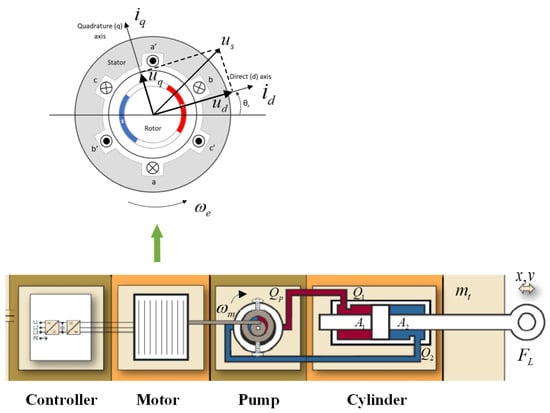
Figure 1
Open AccessArticle
MAGI: A Low-Cost IoT Architecture for Distributed AIS-Based Vessel Monitoring and Maritime Emissions Assessment in Panama
by
Miguel Hidalgo-Rodriguez, Edmanuel Cruz, Cesar Pinzon-Acosta, Franchesca Gonzalez-Olivardia and José Carlos Rangel
Appl. Syst. Innov. 2025, 8(6), 177; https://doi.org/10.3390/asi8060177 - 24 Nov 2025
Abstract
Real-time vessel tracking and environmental assessment in developing regions face significant challenges due to the high cost and proprietary constraints of commercial Automatic Identification System (AIS) services. We introduce MAGI, an open-source, low-cost, IoT-distributed architecture that integrates Orange Pi 5 edge nodes with
[...] Read more.
Real-time vessel tracking and environmental assessment in developing regions face significant challenges due to the high cost and proprietary constraints of commercial Automatic Identification System (AIS) services. We introduce MAGI, an open-source, low-cost, IoT-distributed architecture that integrates Orange Pi 5 edge nodes with software-defined radio (SDR) AIS receivers and containerized microservices to capture, preprocess, and stream AIS messages. During a ten-day field campaign in Panama, our decentralized deployment processed over 500,000 AIS transmissions, achieving 99% uptime and delivering vessel position and speed updates with sub-second latency. Based on the collected data, we also evaluated system scalability, energy consumption, and per node cost, demonstrating that a complete coastal network can be deployed for under USD 1200 per site. These results confirm that MAGI is a scalable, secure, and affordable IoT solution for AIS-based vessel tracking and environmental monitoring in resource-constrained settings.
Full article
(This article belongs to the Special Issue Recent Advances in Internet of Things and Its Applications)
►▼
Show Figures
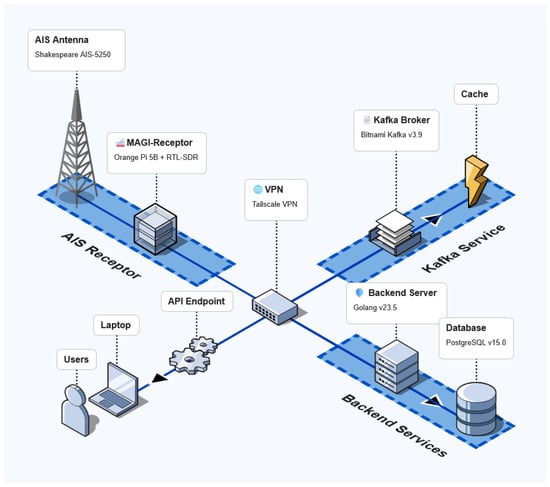
Figure 1
Open AccessArticle
A Mobile Approach to Food Expiration Date Determination Using OCR and On-Cloud Image Classification
by
Octavian Dospinescu, Gabriela-Lorena Grigorcea and Bogdan-Ionuţ Lefter
Appl. Syst. Innov. 2025, 8(6), 176; https://doi.org/10.3390/asi8060176 - 20 Nov 2025
Abstract
►▼
Show Figures
The issue of food waste is more relevant than ever, both for emerging and developed economies. Information technologies have the potential to contribute to reducing this problem, and our research aims to present a viable prototype that uses on-cloud image classification and specific
[...] Read more.
The issue of food waste is more relevant than ever, both for emerging and developed economies. Information technologies have the potential to contribute to reducing this problem, and our research aims to present a viable prototype that uses on-cloud image classification and specific OCR techniques. The result of our study is a low-cost, high-performance mobile application prototype that paves the way for further research. We used advanced application integration concepts, including mobile architectures, Firebase machine learning components, and OCR techniques to highlight how close food products are to their expiration date. In contexts with no printed date, the system computes an indicative shelf-life estimate from conservative category priors. These estimates are not safety judgments and do not replace manufacturer date labels or national food-safety guidance. These results give our article clear elements of authenticity and contribution to the field of knowledge, improving the economic efficiency of warehouses and food stores. The implications of our study are technical, economic, and social.
Full article

Figure 1

Journal Menu
► ▼ Journal Menu-
- ASI Home
- Aims & Scope
- Editorial Board
- Topical Advisory Panel
- Instructions for Authors
- Special Issues
- Topics
- Sections & Collections
- Article Processing Charge
- Indexing & Archiving
- Editor’s Choice Articles
- Most Cited & Viewed
- Journal Statistics
- Journal History
- Journal Awards
- Society Collaborations
- Conferences
- Editorial Office
Journal Browser
► ▼ Journal BrowserHighly Accessed Articles
Latest Books
E-Mail Alert
News
19 November 2025
Meet Us Virtually at the 1st International Online Conference on Sensor and Actuator Networks (CSAN 2026), 9–10 July 2026
Meet Us Virtually at the 1st International Online Conference on Sensor and Actuator Networks (CSAN 2026), 9–10 July 2026

6 November 2025
MDPI Launches the Michele Parrinello Award for Pioneering Contributions in Computational Physical Science
MDPI Launches the Michele Parrinello Award for Pioneering Contributions in Computational Physical Science

Topics
Topic in
AI, Applied Sciences, Computers, Electronics, IoT, ASI, Sensors, AI Sensors
Federated Edge Intelligence for Next Generation AI Systems
Topic Editors: Chunjiong Zhang, Weiwei Jiang, Tao XieDeadline: 31 January 2026
Topic in
Social Sciences, Societies, ASI
Social Sciences and Intelligence Management, 2nd Volume
Topic Editors: Liza Lee, Teen-Hang Meen, Kuei-Kuei Lai, Linda Pavitola, Charles Tijus, Kate ChenDeadline: 31 March 2026
Topic in
Smart Cities, Systems, ASI, Administrative Sciences, Healthcare, Processes
Systems Analytics Theory and Applications for Health Systems Planning
Topic Editors: Sean Shao Wei Lam, Thong Ngee Goh, Alec MortonDeadline: 30 April 2026
Topic in
Applied Sciences, ASI, Blockchains, Computers, MAKE, Software
Recent Advances in AI-Enhanced Software Engineering and Web Services
Topic Editors: Hai Wang, Zhe HouDeadline: 31 May 2026

Conferences
Special Issues
Special Issue in
ASI
Evolution of Electric Motors: Current Trends and Future Prospects for Industrial Applications
Guest Editors: Theoklitos Karakatsanis, Athanasios KarlisDeadline: 30 December 2025
Special Issue in
ASI
Advancing Healthcare Through Intelligent Clinical Decision Support Systems: Techniques, Applications, and Future Directions
Guest Editors: Alberto Comesaña-Campos, Jorge Cerqueiro Pequeño, María Luísa Torres-Durán, Alberto Fernandez-Villar, Manuel Casal-GuisandeDeadline: 30 December 2025
Special Issue in
ASI
Recent Developments in Data Science and Knowledge Discovery
Guest Editor: Wenbing ZhaoDeadline: 30 December 2025
Special Issue in
ASI
Privacy-Preserving Models and Systems in Blockchain
Guest Editor: Christine HennebertDeadline: 20 January 2026









